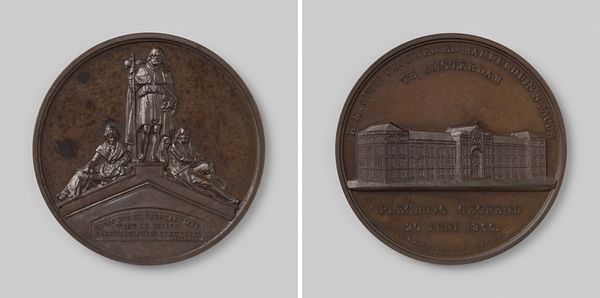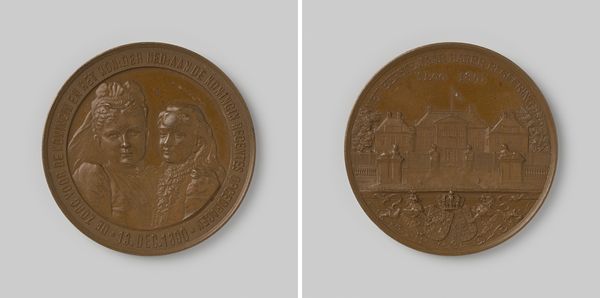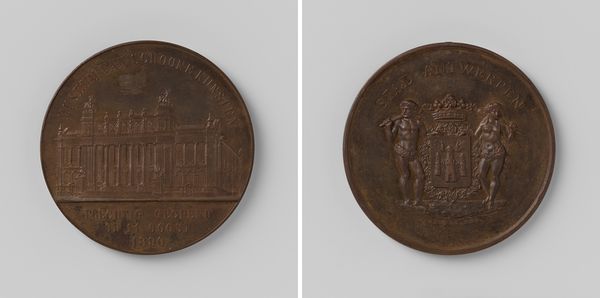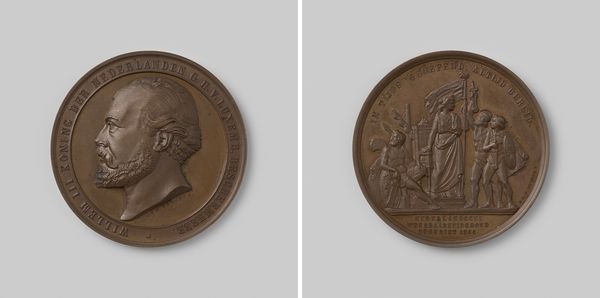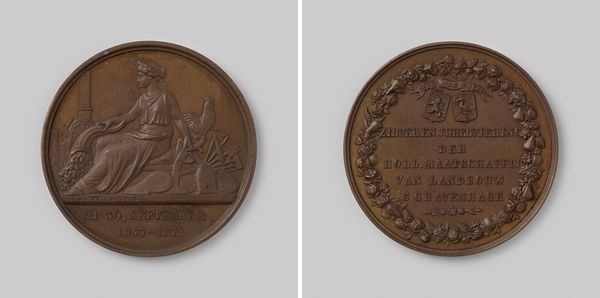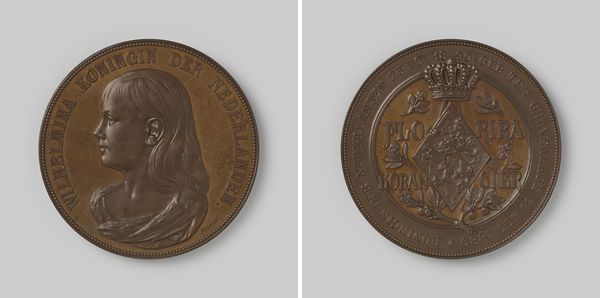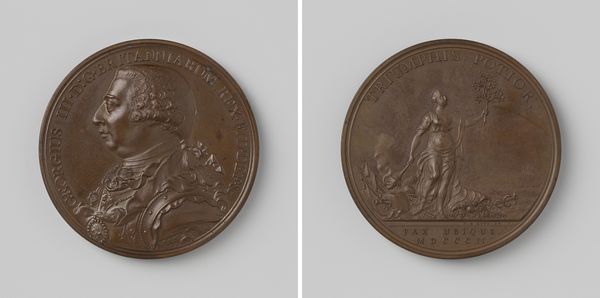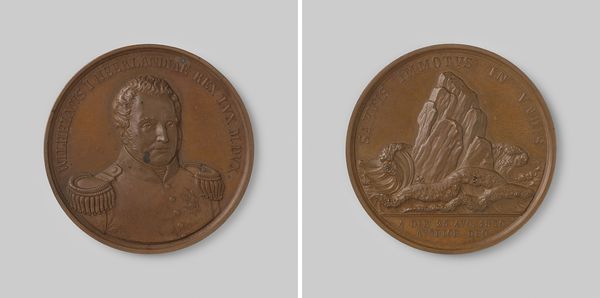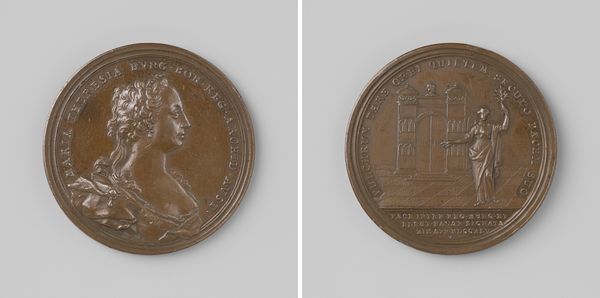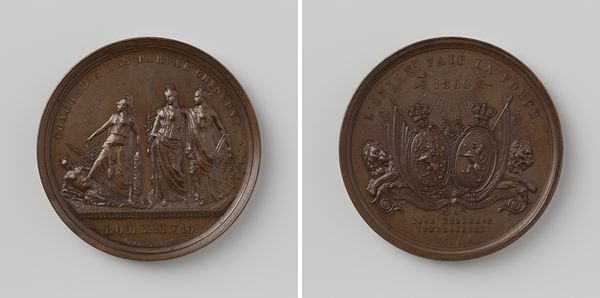
Opening van het Nederlandsch Israëlitisch Jongens Weeshuis te Amsterdam 1865 1865
0:00
0:00
relief, bronze
#
portrait
#
medal
#
dutch-golden-age
#
sculpture
#
relief
#
bronze
#
history-painting
Dimensions: diameter 6.9 cm, weight 149.56 gr
Copyright: Rijks Museum: Open Domain
Curator: At the Rijksmuseum we have a bronze relief, “Opening van het Nederlandsch Israelitisch Jongens Weeshuis te Amsterdam 1865" by Jacob Samuel Cohen Elion, a commemorative medal created in 1865. It's an interesting piece of social commentary cast in metal. Editor: It certainly is striking. The bronze gives it a solemn feel, weighty. I immediately notice the contrast between the allegorical figure on one side and the very architectural depiction on the other. Almost like two sides of a coin, telling two different stories about this orphanage. Curator: Exactly. One side displays a building and dedicatory inscription in formal Dutch while the other holds figures with inscriptions in Hebrew. One side speaks of a building's opening but the other presents imagery referencing exile. Editor: That central maternal figure… the woman sheltering the children carries very clear resonances. She appears as a visual echo of traditional depictions of maternal protection. It makes me think of Charity, protecting the most vulnerable members of society. Curator: Yes! In a Dutch context this image would draw upon visual representations of maternal duty and also point towards contemporary conversations regarding poor relief within Dutch society during the mid 19th century. Remember, institutions like orphanages were not merely practical solutions but also reflections of a society grappling with its moral obligations. Editor: The building itself, shown with almost photographic precision… I can only assume this new orphanage was quite a source of pride. Placing that architectural form directly next to the symbolic, maternal form certainly gives insight to the community that brought these children into their care. Curator: Indeed, the decision to depict the orphanage itself reflects its importance as a symbol of the community's commitment. Also, while created in 1865 the artist purposefully references visual and inscription styles common during the Dutch Golden Age, thereby establishing institutional legitimacy in Amsterdam going back centuries. Editor: I'm also noticing Hebrew text. Were the coins primarily for benefactors and the Amsterdam Jewish community? Curator: Most certainly. This imagery would serve as an emotional trigger deeply embedded within the cultural psyche of those associated with Dutch Jewry. This item serves to show the cultural memory that this community needed to reinforce given it experienced periods of integration along with painful periods of diaspora and outright expulsion from wider society. Editor: Seeing those interwoven layers really enriches the experience. I came away seeing how one culture visually defines moments of importance in its history, especially as a call to unity. Curator: Precisely. Through the images, materials, and language displayed we can still understand this moment in time as something of enduring value.
Comments
No comments
Be the first to comment and join the conversation on the ultimate creative platform.

